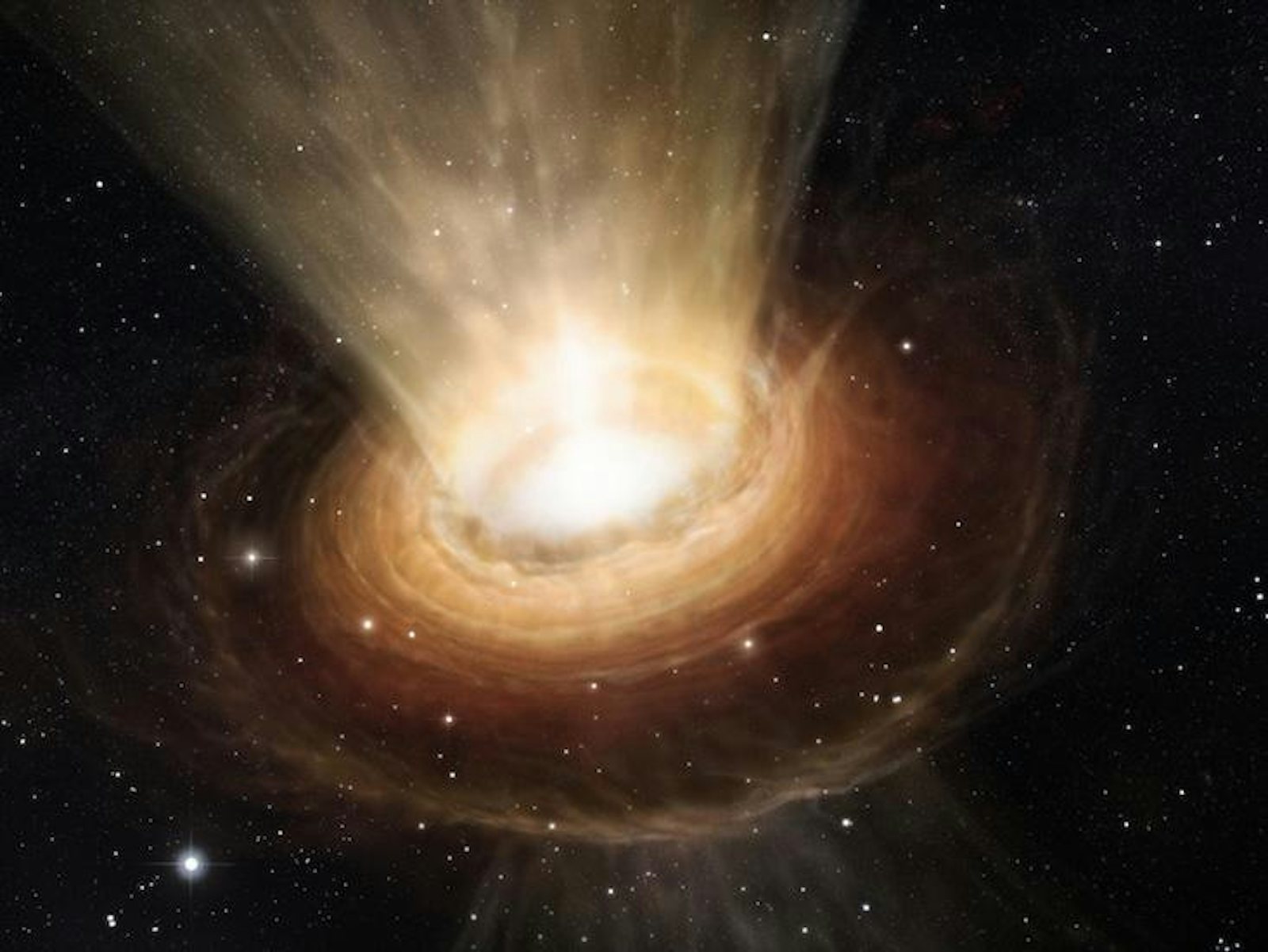A black hole is a physicist’s playground: A place where some of the most bizarre and fundamental concepts in physics can be observed and tested. However, there is currently no way to directly observe black holes in action; these bodies of matter don’t emit the sort of radiation, like light or X-rays, that telescopes are equipped to detect. Fortunately, physicists have figured out ways to imitate the conditions of a black hole in the lab—and in creating analogues of black holes, they are beginning to unravel some the most fascinating puzzles in physics.
Jeff Steinhauer, a researcher in the Physics Department of Technion-Israel Institute of Technology, recently caught the attention of the physics community when he announced that he had used an analogue black hole to confirm Stephen Hawking’s 1974 theory that black holes emit electromagnetic radiation, known as Hawking radiation. Hawking predicted that this radiation would be caused by the spontaneous creation of a particle-antiparticle pair at the event horizon, the point at the edge of a black hole beyond which nothing—not even light—can escape. Under the terms of Hawking’s theory, as one of the particles crosses the event horizon and is captured by the black hole, the other would be ejected into space. Steinhauer’s experiment was the first to exhibit the sort of spontaneous fluctuations that support Hawking’s calculations.
Physicists have cautioned that this experiment still doesn’t confirm the existence of Hawking radiation in astronomical black holes, as Steinhauer’s black hole isn’t exactly the same as one we might observe in space. It’s not yet physically possible to create the intense gravitational fields that form black holes. Instead, the analogue imitates a black hole’s ability to absorb light waves by using sound.
“It’s like you, the sound wave, are trying to swim against a river, and the river is flowing faster than you can swim,” Steinhauer says. His team cooled a cloud of gas atoms to near absolute zero, creating an entity known as a Bose-Einstein condensate. By causing that gas to flow faster than the speed of sound, they created a system from which sound waves could not escape.
Steinhauer’s observations were published in a Nature Physics paper in early August. In addition to observing Hawking radiation, his experiment was significant in that he claimed to observe that the particles released by the sonic black hole and the particles within it were “entangled.” This implies that the two particles are capable of being in multiple physical states, such as their energy levels, at the same time, and that knowing the state of one particle can immediately tell you about the state of the other.
The concept of an analogue black hole was proposed by William Unruh in the 1980s, but only in 2009 was the first created in a lab. Since then, black hole analogues have been adopted by scientists around the world, many of whom are trying to observe Hawking radiation. Though Steinhauer is the first to have success on that front, the analogue systems have already been useful in helping physicists to verify the equations and principles long applied to these theoretical systems only on paper. Indeed, black hole analogues’ greatest promise may lie in helping physicists overcome one of the biggest challenges in physics: Combining gravity with the principles of quantum mechanics, which govern the behavior of subatomic particles—but which so far have been incompatible with the laws of gravity.
Black hole analogues’ greatest promise may lie in helping physicists overcome one of the biggest challenges in physics.
Though a range of methods are used, the principle for every black hole analogue is the same: Each has a point that, like an event horizon, cannot be crossed by whatever oscillation serves in place of light, as the speed required would be too great. Here are some of the other ways scientists are imitating black holes in the lab.
Glass
In 2010, a group of physicists at the University of Milan set the physics community abuzz when they claimed to have observed Hawking radiation from a black hole analogue, which was created using strong laser pulses shone into silica glass. Though the team’s claim has since been called into question—according to physicist William Unruh, the radiation they observed was far more intense than Hawking radiation should be, and traveling in the wrong direction—the analogue they created continues to be an intriguing method of modeling an event horizon.
This method works like so: The first pulse sent into the silica is strong enough to change the refractive index—the speed at which light moves in a substance—within the glass. As the second pulse enters the glass, it slows to a standstill due to this change in the refractive index, creating a “horizon” beyond which light could not penetrate. This sort of system is the opposite of a black hole, from which light cannot escape, and as such has been dubbed a “white hole.” However, according to Stephen Hawking, white holes and black holes are fundamentally the same, meaning they should exhibit the same quantum properties.
A separate research group showed in 2008 that a white hole could be created in a similar way using optic fibers, and further experiments are working on creating the same sort of event horizon using diamond, which is less likely to be damaged by laser light than silica.
Polaritons
A team led by Hai Son Nguyen demonstrated in 2015 that an acoustic black hole could be created using polaritons—a strange state of matter known as a quasiparticle, formed mixing a photon with a material that the light then excites. Nguyen’s team created polaritons by focusing a laser at high power onto a microscopic cavity created out of gallium arsenide, a powerful semiconductor. Inside, the team purposely created a small notch that widened the cavity in one place. When the laser struck the microcavity, polaritons were emitted that flowed toward the notched defect. Yet when the flow of these excited particles reached the defect, they changed speed, moving faster than the speed of sound, implying that a horizon had been created from which sound could not escape.
Though the team has not yet observed Hawking radiation using this method, the researchers propose that in future experiments, any fluctuations caused by particles leaving the field could be detected by measuring a change in the density of the particle fluid. Other experiments using polaritons have also proposed cooling them into a Bose-Einstein condensate, which could then even be used to simulate the formation of wormholes.
Water
Look down at the water swirling into the drain between your feet next time you shower—you might be surprised to learn that you’re looking at something similar to a black hole. In a laboratory at the University of Nottingham, Dr. Silke Weinfurtner has been simulating black holes in a “bathtub vortex,” a 2,000-liter rectangular tank with a sloped funnel at the center. Water is fed into the tank from the tank’s top and bottom, giving the water angular momentum that creates a vortex when it meets the funnel. In this water analogue, the stand-in for light is small ripples on the water’s surface; imagine, for example, dropping a pebble into this flow and watching ripples move away from it in a circle. The closer these ripples are to the vortex, the less able they are able to propagate in the direction away from it. At a certain point, these ripples will no longer propagate at all—a point that can be considered an analogue for the event horizon. This analogue has been particularly useful for simulating the bizarre physics that occurs around rotating black holes, a topic that Weinfurtner is studying now.
Weinfurtner stressed that this isn’t a black hole in the quantum sense; this analogue is happening at room temperature, so only classical mechanics can be observed. “It’s a dirty system,” she added. “But we can manipulate it and show that it is robust against modifications. We ensure our trust that these same phenomena are occurring in astrophysical systems as well.”
Claudia Geib is a freelance science writer based out of Boston. Follow her on Twitter @cm_geib.
The lead photograph is courtesy of Wikicommons.


























